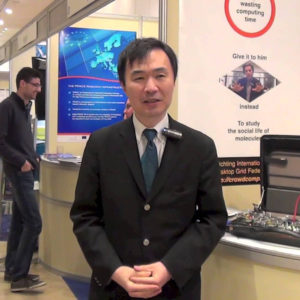
In the 2003 edition of the AOSD conference, speakers took turns to deliver their papers and speeches. Among these was the keynote 1 address on Wednesday, March 19 by Gregor Kiczales from University of British Columbia.
Gregor Kiczales: Making The Code Look Like The Design

Much advancement in software development can be described more as making the code to look closely like the design – from the structured programming looping structure to model-focused development and object-oriented programming.
The first section of the keynote outlines inputs AOP (aspect-oriented programming) is ensuring for this evolution. What is special about AOP? What has it in common with other previous advances? What is there to learn from the past advances and what is the work that still needs to be done?
The second section examines additional steps in the evolution. That is intentional technology as a synthesis of aspect-oriented, object-oriented and intentional programming methods. The Integrated technology makes the code in many systems appear more like its design. Examples were used to show what intentional technology can look like and to examine the unique function to be played by aspect-orientation.
Thursday, March 20 was the delivery of keynote 2 by Satoshi Matsuoka from Tokyo Institute of Technology.
Satoshi Matsuoka: Aspect Of Grid Computing

The grid is observed to assume the position of a key infrastructure for network computing. There are active and large international and national projects that not just build grids but also conduct Grid middleware and Grid applications development and research. The talk introduces the existing status quo of Grid research and attempts to investigate and identify its prospects and aspects for aspect-oriented programming to play its part in the construction. The reason being that the present trend is focused on defining Grid services set as web-oriented component models.

